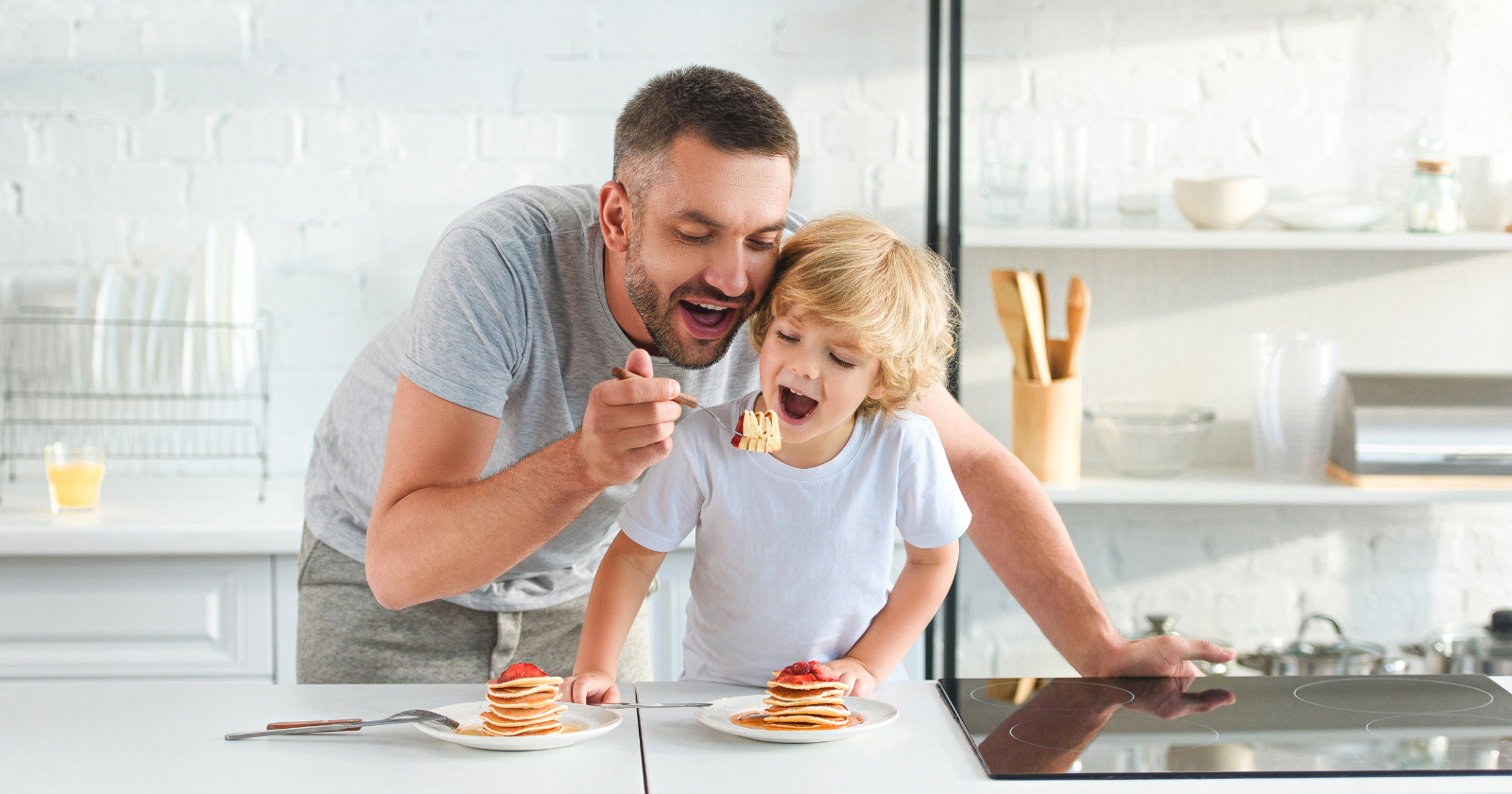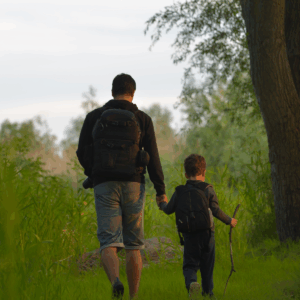Let’s be honest—parenting isn’t always a smooth ride. Some days you feel like you’re nailing it, and other days you’re just trying to make it to bedtime without losing your cool.
But here’s something I’ve learned over the years, both as a dad and now as a grandfather: it’s not the big, flashy moments that make the deepest impact.
It’s the small, seemingly ordinary things that quietly build the strongest bonds.
Psychology backs this up.
Research consistently shows that secure parent–child relationships are built through frequent, positive, and emotionally attuned interactions—not grand gestures.
So today, I want to share eight small things parents do (often without realizing it) that make them exceptional at bonding with their kids.
1) They really listen—without rushing to fix
When your child starts talking about something—whether it’s how their friend didn’t share a toy or how they’re nervous about school—what’s your first instinct?
For many of us, it’s to jump in with advice or a solution.
But often, what kids really want is to feel heard.
According to developmental psychologists, active listening—giving your full attention, making eye contact, and reflecting back what your child says—helps your child feel safe and valued.
It’s not about solving every problem.
Sometimes it’s just about saying, “That sounds tough,” or “I can see why you’d feel that way.”
When my eldest was around ten, he once told me he felt invisible in his group of friends.
My first reaction was to offer suggestions—“Join a new club! Try a new hobby!”—but instead, I decided to just listen.
What happened next surprised me: he opened up more deeply than ever before.
That’s when I learned one of the golden rules of connection—listening is love in action.
2) They create small rituals that matter
Rituals don’t have to be elaborate.
- 8 signs you’re lonely in your relationship even though you’re not technically alone - Global English Editing
- If you feel more alive doing your own thing than being with people, here’s why - Global English Editing
- If you’ve mastered the art of being unfazed, people notice — even if they don’t say it - Global English Editing
In fact, the simpler they are, the more likely they’ll stick.
Maybe it’s a nightly story before bed, Saturday pancakes, or a quick chat in the car on the way to school.
These repeated moments create emotional anchors—predictable little oases in a child’s day.
Psychologists call this “shared routine bonding,” and it’s been shown to foster security and trust.
Kids thrive on routine, not because they’re rigid, but because predictability equals safety.
In my house, it used to be “story and snack.”
My kids are grown now, but they still remember those evenings like they happened yesterday.
Funny how a banana and a few pages of The Wind in the Willows can make lifelong memories.
3) They let play lead the way
If you’ve ever watched a child totally absorbed in play, you’ve witnessed pure joy.
What’s even better is when you join in—not as the “teacher” or “supervisor,” but as a fellow explorer.
Play therapy experts emphasize that play is the language of children.
It’s how they process their world, practice empathy, and build trust.
Even ten minutes of undistracted play sends a powerful message: You matter enough for me to be fully present.
And trust me, kids know when you’re half there.
Put the phone down, let them take the lead, and don’t worry about doing it “right.”
You might just find that you’re the one having the most fun.
4) They show affection freely—and in tune with their child’s needs
 Physical affection is one of the simplest and most powerful ways to bond with your kids.
Physical affection is one of the simplest and most powerful ways to bond with your kids.
Hugs, pats on the back, tousled hair—it all says, “I see you. You’re loved.”
But here’s the key: it needs to match your child’s comfort level.
Some kids love cuddles; others prefer a high-five or a squeeze on the shoulder.
Studies in developmental psychology show that regular physical affection lowers stress hormones in both children and parents.
It also boosts oxytocin—the so-called “bonding hormone.”
When my grandkids come over, they know I’m good for a bear hug or two.
But I’ve learned to read the room—sometimes a simple wink or playful elbow bump does the trick.
It’s not about the act itself; it’s about meeting them where they are.
5) They let their kids help—even when it’s messy
Here’s one I’ve covered in a previous post about building kids’ confidence, but it fits perfectly here too.
Parents who let their children “help” with small things—setting the table, stirring the pancake batter, watering the plants—aren’t just teaching life skills.
They’re sending a powerful message: You’re capable, and what you do matters.
Sure, it might take twice as long to get dinner ready, and yes, there will probably be flour on the floor, but the sense of belonging kids gain from contributing is priceless.
Family psychologists note that shared tasks create a sense of teamwork, which strengthens bonds.
Kids don’t need to be spectators in family life—they want to feel like part of the crew.
And between us, nothing warms my heart more than seeing my grandkids “help” in the kitchen, even if half the cookies end up lopsided.
6) They apologize and model humility
A lot of parents worry that apologizing to their kids undermines authority.
I’d argue the opposite.
When you say, “I was wrong,” or “I shouldn’t have raised my voice,” you’re showing your child that mistakes are part of being human—and that love doesn’t vanish because of them.
Psychologists refer to this as modeling repair behavior.
It teaches children how to take responsibility, rebuild trust, and move forward after conflict.
One time, after losing my temper over a spilled drink (I’d had a long day, and patience was running thin), I apologized later that evening.
My son looked up at me and said, “It’s okay, Dad. I get mad too.”
That little exchange taught both of us something profound about forgiveness and empathy.
7) They share their own stories and emotions
Children bond more deeply when they see their parents as real people—not just authority figures.
When you share appropriate stories from your own life (“I was nervous before my first big test too,” or “I remember feeling left out once”), you’re building emotional bridges.
It helps them realize that their struggles aren’t unique or shameful.
They also learn how to articulate feelings by watching you do it.
Now, I’m not saying you need to turn family dinner into a therapy session.
But a sprinkle of personal honesty can go a long way.
My grandkids love hearing stories about when I was their age—especially the ones where I got into a bit of harmless mischief.
It makes them laugh, but more importantly, it helps them feel connected to me on a human level.
8) They notice the small things—and say them out loud
This one might just be the most powerful of all.
When you notice and name the little things your child does—like sharing a toy, trying again after failing, or comforting a friend—you reinforce their self-worth.
Psychologists call this specific praise.
It builds confidence far more effectively than general praise like “Good job!”
Try saying, “I noticed you helped your sister when she was upset. That was really kind.”
These words stick. They teach kids who they are at their core—not just what they can do.
And here’s the magic part: kids who feel seen are more likely to open up and connect.
Recognition feeds closeness.
I’ve lost count of the number of times a small word of encouragement turned a moody afternoon into a meaningful conversation.
Sometimes, all it takes is a little noticing.
Final thoughts
When it comes to bonding with your kids, the truth is simple: it’s the small things that carry the biggest weight.
You don’t need fancy toys, expensive trips, or picture-perfect moments.
What kids crave most is connection—and connection grows in the everyday moments we often overlook.
So, next time you’re folding laundry together, sharing a snack, or just walking to the park, remember: these are the moments that shape their hearts.
And who knows? Years from now, they might just look back and realize those little things weren’t so little after all.
What small moment will you share today?



